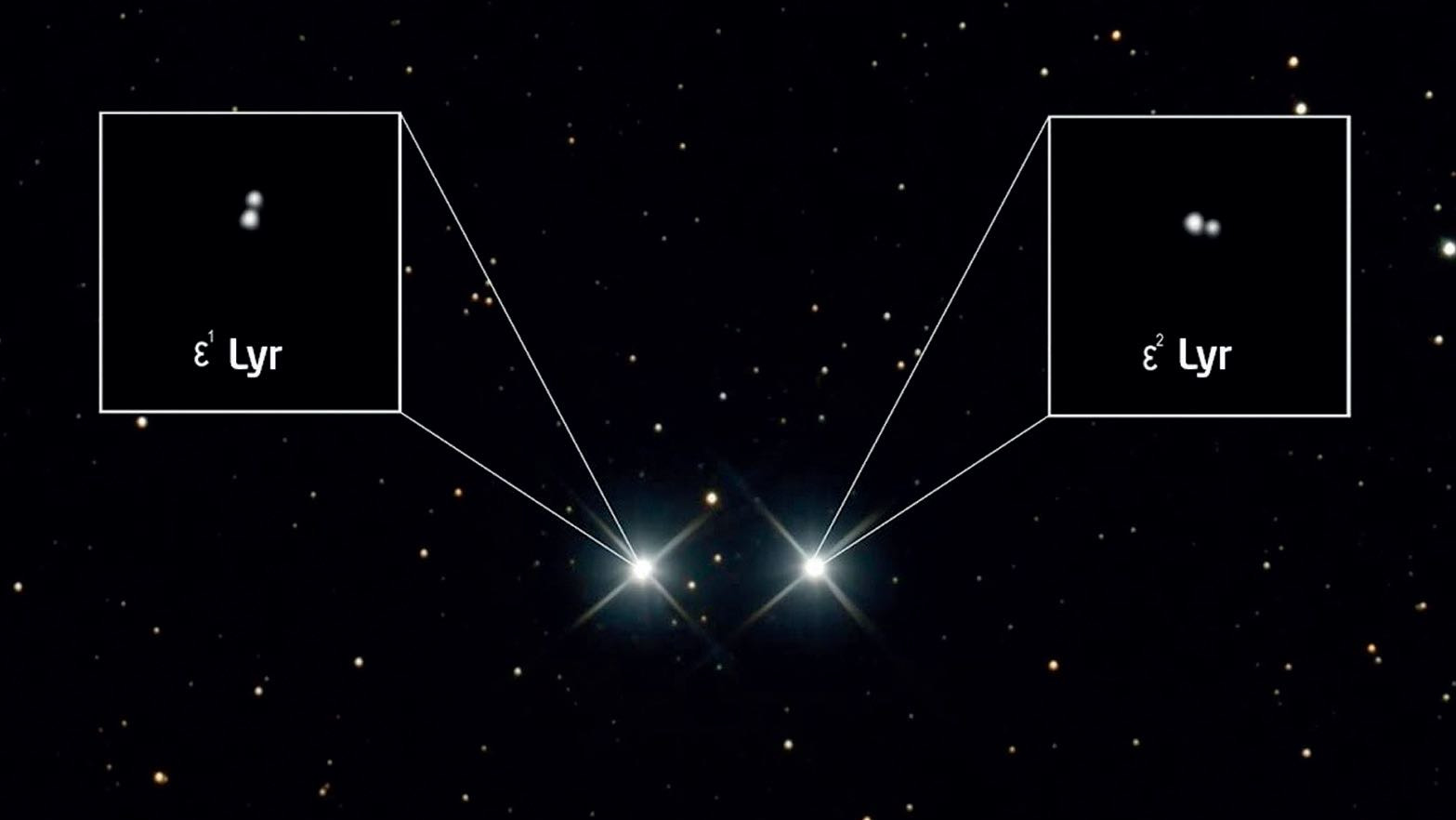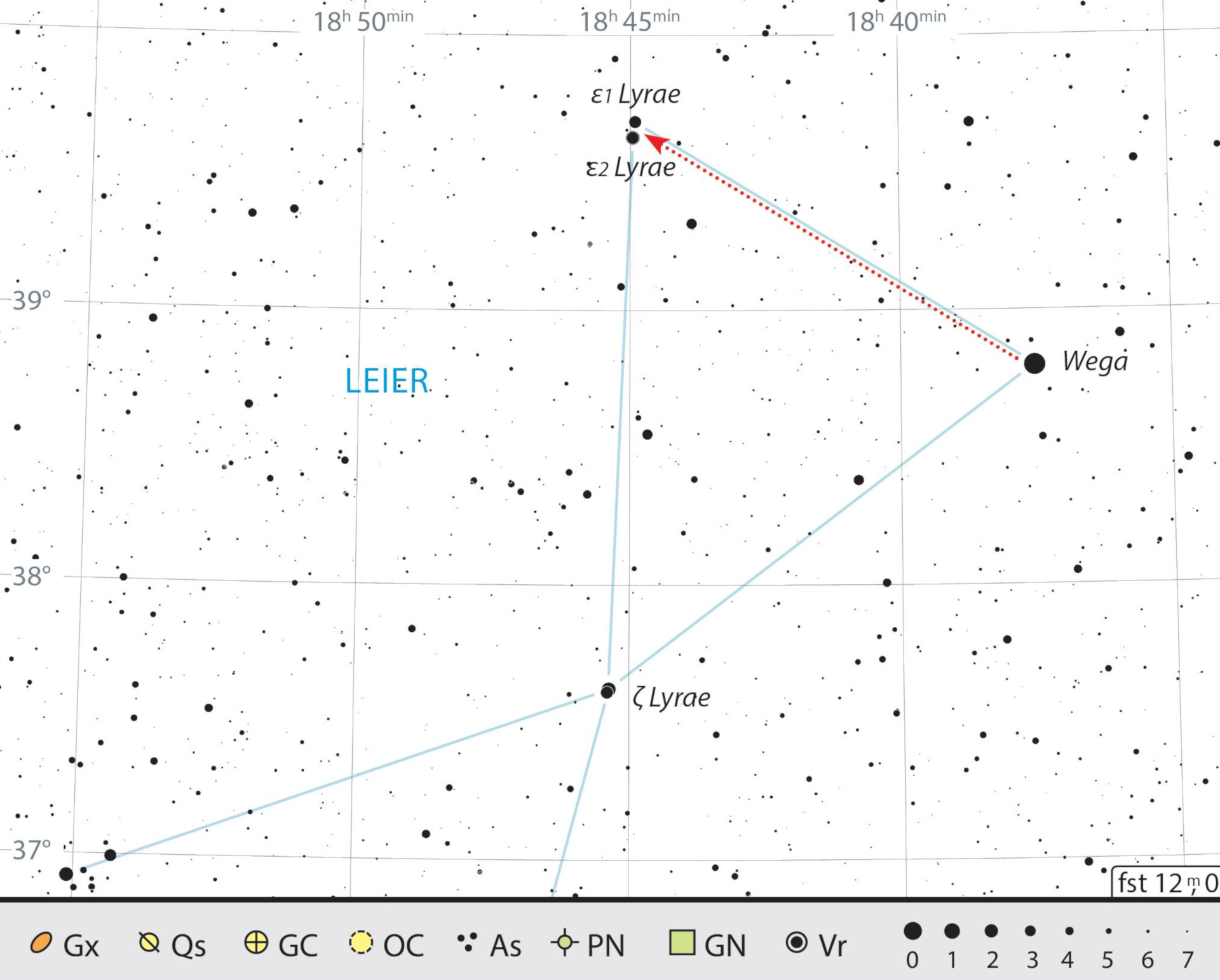Epsilon Lyrae - the famous Double Double
A binary star consisting of binary stars: the first separation is easy, but you’ll need more magnification to distinguish the pairs.
 Epsilon Lyrae is not just a binary star, but a double binary star. Julian Zoller
Epsilon Lyrae is not just a binary star, but a double binary star. Julian ZollerDo you remember the first celestial object you pointed your first telescope at? This author's first ever astronomy experience was in the summer after the turn of the millennium observing Vega or α Lyrae, the brightest object in the evening sky, which could be comfortably observed with the very lowest magnification. However, what was fascinating was not so much Vega’s brightness, but instead a small pair of stars located to the east, with absolutely equally bright suns. The pair were, as it later turned out, Epsilon 1 and Epsilon 2 Lyrae and would probably have been even more fascinating still with a higher magnification: each star of the pair also forms a pair, meaning each star of the binary star is itself also a binary star.
Double the observing enjoyment
 Drawing of Epsilon Lyrae using a 12-inch Newtonian at a magnification of 250×. Ferenc Lovró
Drawing of Epsilon Lyrae using a 12-inch Newtonian at a magnification of 250×. Ferenc LovróIn astronomical observation literature, ε Lyr is regarded as the showpiece binary star: both components are almost equally bright (mag. 5 and mag. 5.3) and can be resolved into four components at a correspondingly higher magnification – often a magnification of 100× is recommended. These are also almost equally bright (Epsilon 1: mag. 5 and 6.1, Epsilon 2: mag. 5.3 and 5.4) and are almost equi-distant from one another (2.1" and 2.4" respectively). All in all, it results in a fascinating image that captivates every observer, regardless of how large their instrument, or how light-polluted their location.
As a city astronomer, they are admittedly a little harder to resolve. The components are separated by a hair's-width gap only at magnifications of 166× or more, Epsilon 2 which is located to the south resolves a little sooner than Epsilon 1. While here the typical figure 8 as seen shortly before separation is still visible, the components of Epsilon 2 are already separated. This difference is probably due to the greater difference in the component stars’ magnitudes. But once you have resolved them, the sight is exhilarating.
The Double Double and even more components
The light from Epsilon 1 and 2 takes around 160 years to reach us: a comparatively short length of time. What is interesting, is that the two binary stars are not only optically connected as is often the case with such stars, but also physically connected, although the orbit periods of 1170 and 585 years respectively are extremely long. By the way, ambitious city astronomers can take a look at other components of the Double Double. Five should be within reach for the amateur astronomer. However, the brightest of them, at around magnitude 10, is probably visible only if the seeing is excellent. It lies around half way between Epsilon 1 and 2 and forms a right-angled triangle together with these two suns. A real challenge for city astronomers!
 Finding chart for the Double Double ε Lyr. J. Scholten
Finding chart for the Double Double ε Lyr. J. ScholtenAuthor: Karl-Peter Julius / Licence: Oculum-Verlag GmbH
